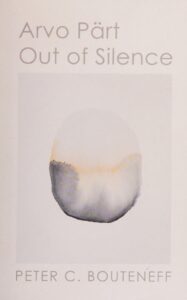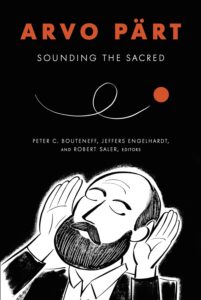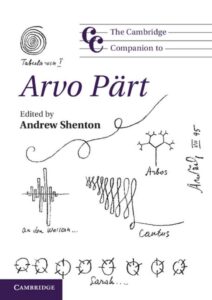Come join us now, and enjoy playing your beloved music and browse through great scores of every level and styles!
Can’t find the songbook you’re looking for? Please, email us at: sheetmusiclibrarypdf@gmail.com We’d like to help you!
Table of Contents

Best Sheet Music download from our Library.

Please, subscribe to our Library.
If you are already a subscriber, please, check our NEW SCORES’ page every month for new sheet music. THANK YOU!
Arvo Pärt: The Architect of Sacred Silence
Born on September 11, 1935, in Paide, Estonia, Arvo Pärt has become one of the most performed and beloved living composers in the world. His music, an island of profound tranquility in a noisy modern world, transcends the concert hall to speak directly to the human spirit. From the Soviet-era avant-garde to the creator of a unique musical language he calls tintinnabuli, Pärt’s journey is one of artistic integrity, spiritual seeking, and ultimate redemption through sound.

Browse in the Library:
Or browse in the categories menus & download the Library Catalog PDF:
Biography: A Journey from Experimentation to Exile
Pärt’s musical education began in Rakvere and continued at the Tallinn Music Middle School. He later studied composition at the Tallinn Conservatory (now the Estonian Academy of Music and Theatre) under Heino Eller, who was known for nurturing a distinct “Estonian school” of composition.
His early career was marked by a struggle with the strictures of Soviet censorship. His first significant works, like the poignant Nekrolog (1960), the first Estonian piece to use twelve-tone serialism, drew official criticism for its “decadent” modernism and somber subject (commemorating the victims of the Holocaust). Throughout the 1960s, he immersed himself in the techniques of the Western European avant-garde—serialism, collage, and aleatoric (chance) music—as heard in works like his Symphony No. 2 (1966) and Credo (1968).

It was Credo, however, that became a turning point. Its explicit sacred text (the Christian Creed) and overwhelming dramatic arc, which culminates in a serene Bach-like chorale, was the final straw for Soviet authorities. It was banned, and Pärt was forced into a period of public silence and private crisis.
For nearly eight years, he composed almost nothing, entering a period of intense study of early music—Gregorian chant, the Notre Dame School (Machaut, Léonin, Pérotin), and the Renaissance polyphony of Josquin des Prez. This deep immersion, coupled with his own spiritual exploration in the Russian Orthodox faith, led to a radical transformation. He emerged in 1976 with a completely new, utterly original musical voice, announced to the world with three works: Für Alina, Trivium, and the monumental Tabula Rasa.
In 1980, facing continued persecution, Pärt, his wife Nora, and their two sons emigrated from the USSR. After a year in Vienna, where he adopted Austrian citizenship, they settled in West Berlin, where he still resides. Since leaving Estonia, his international fame has grown exponentially, making him a cultural icon and the most performed living composer of classical music.
Musical Style and Harmony: The Tintinnabuli System
The fruit of Pärt’s silent years was the development of his signature technique: tintinnabuli (from the Latin for “little bells”). This is not just a compositional style but a philosophy of music, a meditative practice, and a theological statement.
The principles of tintinnabuli are deceptively simple:
- The Triad as Sacred Ground: The music is built almost exclusively around the notes of a major or minor triad. This is a radical return to tonality, but not in the dramatic, narrative sense of the 19th century. For Pärt, the triad is a universal, sacred constant—a symbol of perfection and peace.
- The Two Voices: The musical texture is typically divided into two essential lines:
- The M-voice (Melody voice): A stepwise melody, often moving in a scalar motion, embodying the “human” or “worldly” realm.
- The T-voice (Tintinnabuli voice): A single note from the triad that arpeggiates around the tonic triad, embodying the “divine” or “spiritual” realm. This voice acts like a ringing bell, constantly present and orienting the melody.
- Strict Rules: The interaction between these two voices is governed by self-imposed, almost mathematical rules. The T-voice moves to the closest note in the triad to the M-voice, creating a harmonious, bell-like resonance around the ever-moving melody.
The result is music of breathtaking simplicity, purity, and emotional depth. It is characterized by:
- Extreme Economy: Every note is essential; there is no decoration.
- Silence: Silence is not an absence of sound but a sacred space, an integral part of the music itself.
- Slow Tempi: The music moves with a timeless, contemplative quality.
- Sonic Luminescence: The sound seems to generate its own light, creating a sense of serene stasis and spiritual weight.
Major Compositions and Works
Pärt’s tintinnabuli works form the core of his beloved repertoire:
Tabula Rasa(1977): A double concerto for two violins, prepared piano, and string orchestra. It is a masterpiece of tension and release, moving from frantic, repetitive figurations to passages of sublime, timeless beauty.Fratres(1977): Perhaps his most famous work, existing in over 20 different versions for various instruments. Its structure is a series of quiet, meditative episodes separated by a rhythmic, percussive cadence.Spiegel im Spiegel(1978): For violin and piano. The title means “Mirror in the Mirror,” and the music perfectly embodies this with an endless, ascending melodic line reflected in the unwavering triadic piano. It is an icon of minimalism and profound peace.Passio(1982): The Passion of Jesus Christ according to St. John. A massive, 70-minute setting that is the ultimate expression of tintinnabuli, applying its strict rules to a large-scale dramatic form with austere, powerful effect.Te Deum(1984-85): For choir, strings, and prepared piano. A majestic and awe-inspiring work that washes over the listener like waves of sound, representing the celestial glory of its text.Miserere(1989): A large-scale work for soloists, choir, and ensemble that builds from near silence to overwhelming climactic cries of “Miserere!” (Have mercy!) before receding back into silence.
Ideas, Influences, and Legacy
Arvo Pärt’s music is the sound of his deepest convictions. It is inextricably linked to his Christian faith, though its power resonates with listeners of all beliefs and none. His central idea is that music can be a direct path to the divine, a form of prayer that creates a space for meditation and inner peace.
His influences are a unique fusion:
- Early Music: The monodic purity of Gregorian chant and the open intervals of organum.
- Modernism: The discipline and structural thinking of serialism, repurposed for tonal ends.
- Orthodox Chant: The mystical, resonant quality of Slavic liturgical music.
- Silence: The influence of John Cage is not in chaos, but in the reverence for silence itself.
Arvo Pärt’s legacy is that of a true original. In a century often defined by artistic fragmentation and complexity, he dared to be simple. He demonstrated that radicalism could be found not only in adding more notes, but in stripping them away to reveal their essential, luminous core. His “holy minimalism” (a label he dislikes but is widely used) offers a sanctuary of sound, a universal language of solace, stillness, and sublime beauty that continues to touch millions around the globe. On his birthday, we celebrate not just a composer, but an architect of the soul.
Search your favorite sheet music in the category of Classical and Contemporary music
Arvo Pärt- Spiegel im Spiegel
Performed by Jürgen Kruse (Piano) and Benjamin Hudson (viola).
Arvo Pärt: Spiegel im Spiegel (Full Album)
00:00:00 Spiegel im Spiegel, for violin & piano 00:10:22 Variationen zur Gesundung von Arinuschka, for piano solo 00:15:58 Für Alina, for piano solo 00:19:29 Spiegel im Spiegel, for viola & piano 00:29:34 Mozart-Adagio, for violin, cello & piano 00:37:20 Spiegel im Spiegel, for cello & piano
Artist: Benjamin Hudson (viola) Sebastian Klinger (cello) Jürgen Kruse (piano)
Listen to The Best of Arvo Pärt on Spotify
Browse in the Library:
Or browse in the categories menus & download the Library Catalog PDF:
